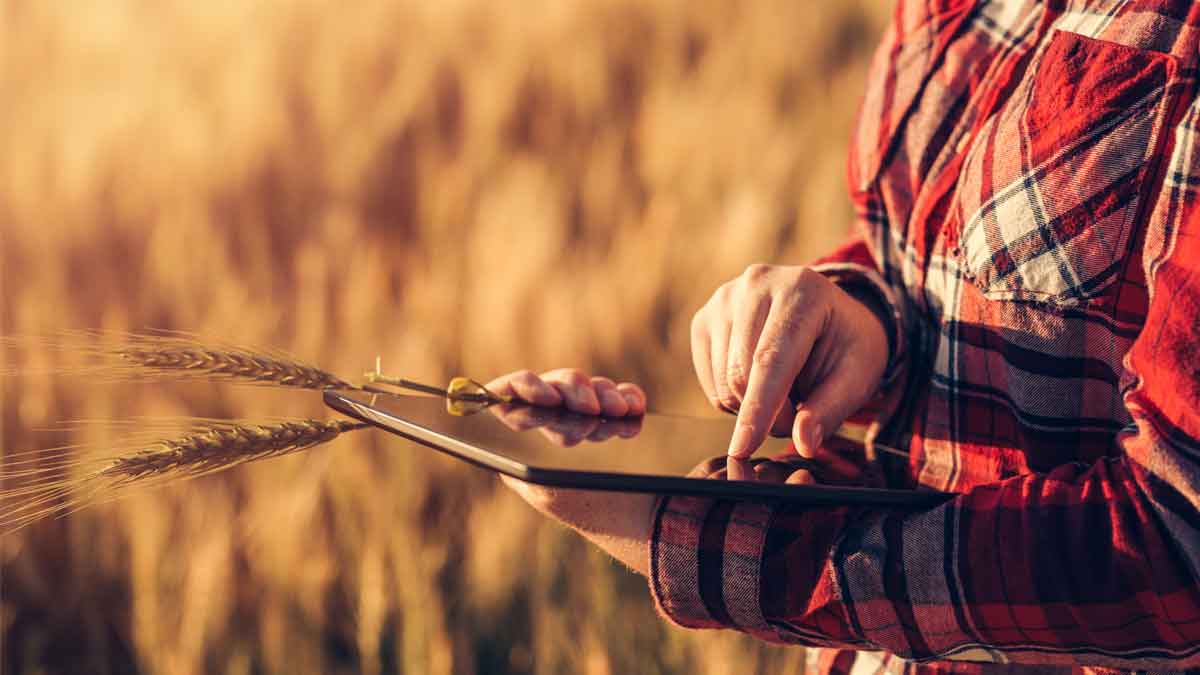The Internet of Things (IoT) is a rapidly expanding field that has enabled connected devices to enter every aspect of our lives, including fitness and health, home computerization, logistics, and logistics, as well as smart cities. The future of IoT in agriculture is also important.
People can use smart wearables, connected devices, and driverless cars thanks to IoT technology.
The Future of IoT in Agriculture
IoT helps us meet our food needs by reducing environmental hazards, such as extreme weather and climatic transitions.
The harvesters and tractors were both mechanical inventions that work in agriculture since the 20th century. The agriculture industry is heavily dependent on innovative ideas because of the increasing demand for food.
The Industrial IoT has aided increased agricultural productivity with a lower cost, so, over the next few years, smart systems based on IoT will be more common in agricultural operations.
A recent estimate shows that the agricultural industry will experience a compound annual growth rate (CAGR) of 20% due to IoT system installations.
In addition, the number of linked agricultural devices will increase from 13 million in 2014 to 225 million by 2024.
IoT Sensors in Agriculture
Farmers use sensors in their work for almost 10 years. However, The disadvantage of traditional sensor technology is that it does not provide real-time data. The sensors stored the data in their attached memory, which allowed us to use it.
With the future of IoT in agriculture, much more sophisticated sensors are available. Now it is possible to link these devices to the cloud through a cellular/satellite connection. This allows us to access real-time data from the sensors and allows for better decision-making.
IoT sensors in agriculture have made it easier for farmers to monitor water tanks and make irrigation more efficient. IoT technology allows sensors to be integrated into all aspects of agriculture operations, including how long it takes for a seed or vegetable to mature and the costs involved.
As a second wave of the ecological movement, the Internet of Things in Agriculture has emerged. Two-fold benefits can be derived from IoT implementation for farmers.
Farmers have been able to reduce costs and increase their yields through the use of reliable data that aids in decision-making.
Application of IoT to Agriculture
Smart Farming is a high-tech and efficient method of cultivation and food production that is environmentally friendly. This is a way to integrate smart electronics and cutting-edge tech into agriculture.
Smart farming relies heavily on the Internet of Things. This eliminates the need for growers and farmers to perform manual labor and increases productivity in all ways possible.
The Internet of Things is a significant benefit to agriculture due to its dependence on it. It has helped with water efficiency, input optimization, and other benefits. The immense advantages of the Internet of Things have made a significant difference in agriculture.
By tracking the field in real-time, IoT-based Smart Farming strengthens the whole Agriculture system. Farmers can save time and use IoT sensors in agriculture and interconnectivity to make the Internet of Things work for them.
It has also reduced energy waste like electricity and water. It provides a clear, real-time view of various variables, including temperature, humidity, and soil.
Here are some benefits of using modern technology in agriculture
Climate Conditions
The climate is crucial for farming. A poor understanding of climate can have a major impact on crop production and efficiency. However, IoT solutions allow you to monitor weather conditions in real-time.
Farmers can collect data about the climate, so, it is possible to select the best crops for growth in specific climatic conditions. The IoT environment uses sensors to monitor environmental conditions like humidity, temperature, rainfall, and other factors.
You can view these parameters with a variety of sensors and tailor them to your needs for smart farming.
IoT sensors in agriculture can monitor the crop’s health and the environment around it. If unusual weather patterns are detected, a warning is issued. It is no longer necessary to be physically present in adverse weather conditions. This increases productivity and gives farmers more agricultural benefits.
Precision farming
One of the most well-established IoT technologies in agriculture is precision agriculture, also known as precision farming, like the smart farming solution for farms and gardens.
Smart farming applications can be used to make farming more efficient and controlled with the future of IoT in agriculture.
These include livestock surveillance, vehicle tracking, and field observation. Precision farming is about using sensors to interpret and then react accordingly.
Precision farming allows farmers to gather data using sensors and then interpret it to make informed decisions. Some techniques such as vehicle tracking, irrigation management, livestock management, and livestock management are all important to increase productivity and effectiveness.
Precision farming improves operating performance by monitoring soil conditions and associated parameters. You can also monitor the embedded devices’ operating conditions in real-time to detect water or nutrient levels.
Data Analytics and the Future of IoT in Agriculture
IoT sensors’ data require more storage than traditional databases. Smart agriculture relies heavily upon cloud-based data storage as well as an IoT platform. These programs will be a key part of enabling more efficient operations.
The main source for large-scale data collection within the IoT universe is sensors. Analytics software converts the data into useful facts by processing them.
Data analytics can be used to analyze climate, animal, and crop conditions. As a result, data analytics allows for better decision-making through technological advances. Through collecting data from sensors using IoT devices, you will learn about the real-time state of your crops.
The future of IoT in agriculture allows predictive analytics to help you make better harvesting decisions. Pattern forecasting can be used by farmers to predict weather patterns and crop harvesting. IoT has helped farmers maintain the quality of their crop production and soil fertility. This has increased product quality and volume.
